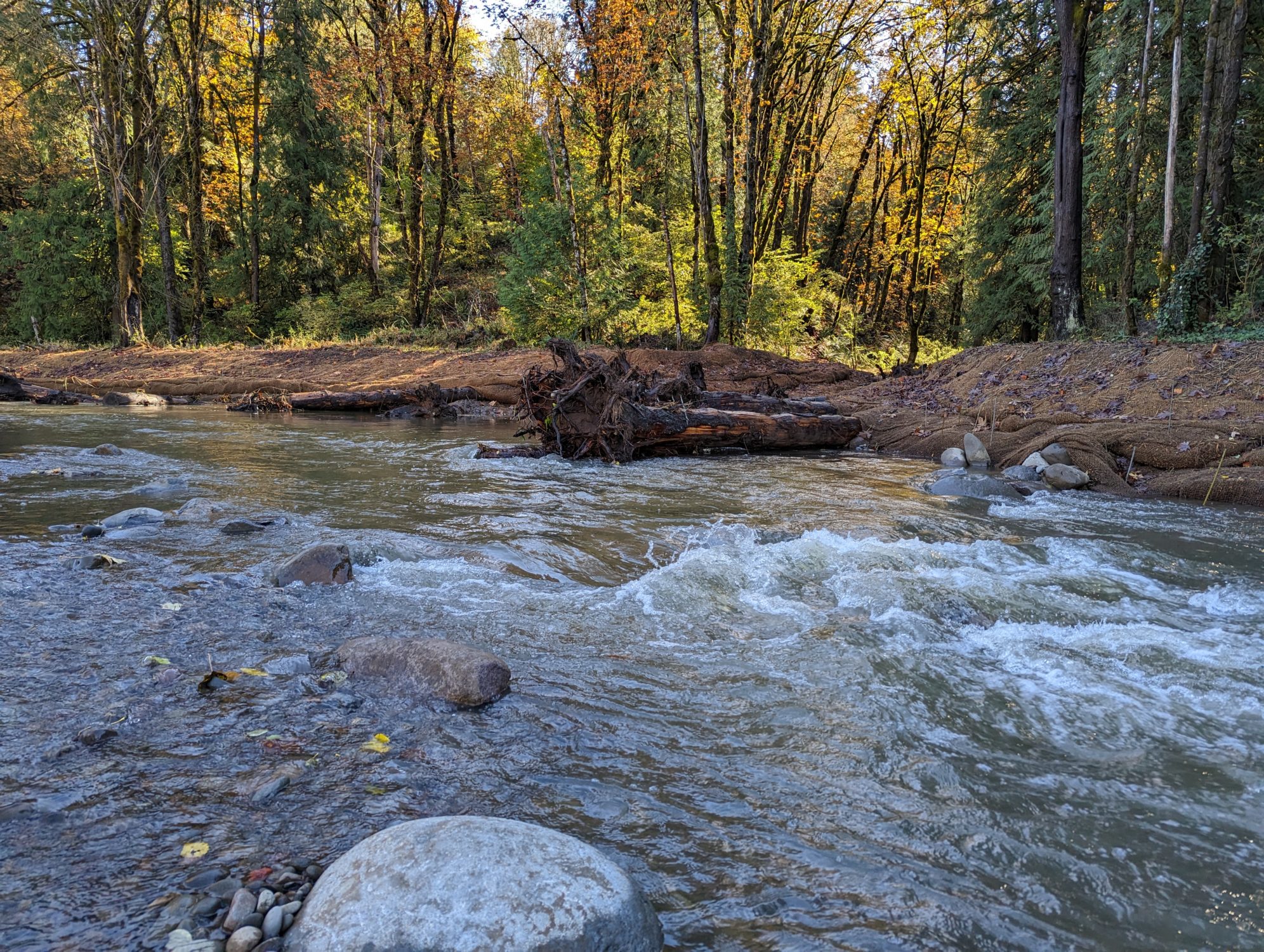Written by Nick Cook (OTAK), Lisa Moscinski (Portland Bureau of Environmental Services)
As many fans of Johnson Creek are aware, much of the creek is trapped between hand-placed rock walls built during the 1930s under the Works Progress Administration (WPA). Because of their origin, these walls are often referred to as WPA Walls. Built as an attempt at relieving flooding on the creek system, these walls trap Johnson Creek in a channelized form, eliminating regular access to its floodplain and wiping away the landscape normally found on the streambed. This condition makes the creek unable to utilize natural processes for building in-stream habitat! This summer, construction has been completed on the Cedar Crossing Restoration Project, a stream restoration design effort that has been underway at this site since 2018, a site targeted for restoration since the Johnson Creek Restoration Plan was developed in 2001. The project is a result of a multi-stakeholder effort led by the City of Portland Bureau of Environmental Services.

Cedar Crossing is the name for the covered bridge on SE Deardorff Road, the upstream limit of the project. Prior to the project, both banks of the creek from the bridge downstream were WPA Wall. After site reconnaissance, the City of Portland utilized two previously owned properties and an additional private property purchased in 2019 to gain access to the creek and do a full restoration. Plans called for an extensive effort to bring Johnson Creek back to its most natural form: removal of WPA Wall from both banks of the creek and from a cold-water tributary named Deardorff Creek. Also part of the plan: addition of over 100 pieces of large woody material (LWM), construction of three riffle-pool sequences, excavation of the north floodplain to restore stream access, and construction of a side channel filled with spawning gravel for our salmonid neighbors. In removing the WPA wall and clearing the floodplain, the project also removed a concrete swimming pool and surrounding outbuildings to give Johnson Creek some breathing room. Where possible, preservation of existing mature vegetation was a top priority.

Adding these elements will help speed the restoration of habitat in and around the creek. LWM adds places to hide both for spawning adult salmon and for young salmon in the rearing stages. Removal of the WPA Wall will allow vegetation to grow right up to the creek and provide more shade and hiding places. Riffles and pools add variety back to the flow in the creek, with turbulent riffles providing oxygen in the water and low-energy pools providing depths where salmon can take refuge when the surface gets warm in the summer. Where pools and riffles meet, salmon find their favorite mix of gravels for spawning, ensuring future generations may still find salmon in our neighborhoods! The side channel in the floodplain provides another great place for salmon to spawn. A wide, open floodplain allows places for water to slow down, helping fish remain in the creek reach when floods pulse through the stream valley on their way to the Willamette River. Construction was just completed in October, now revegetation of the site is underway – we’re all hoping our aquatic friends are as excited as we are for the new home we’ve built for them! As waters rise this winter, we’ll be keeping an eye out for new tenants including salmon, lamprey, beaver, and many other birds and animals!


